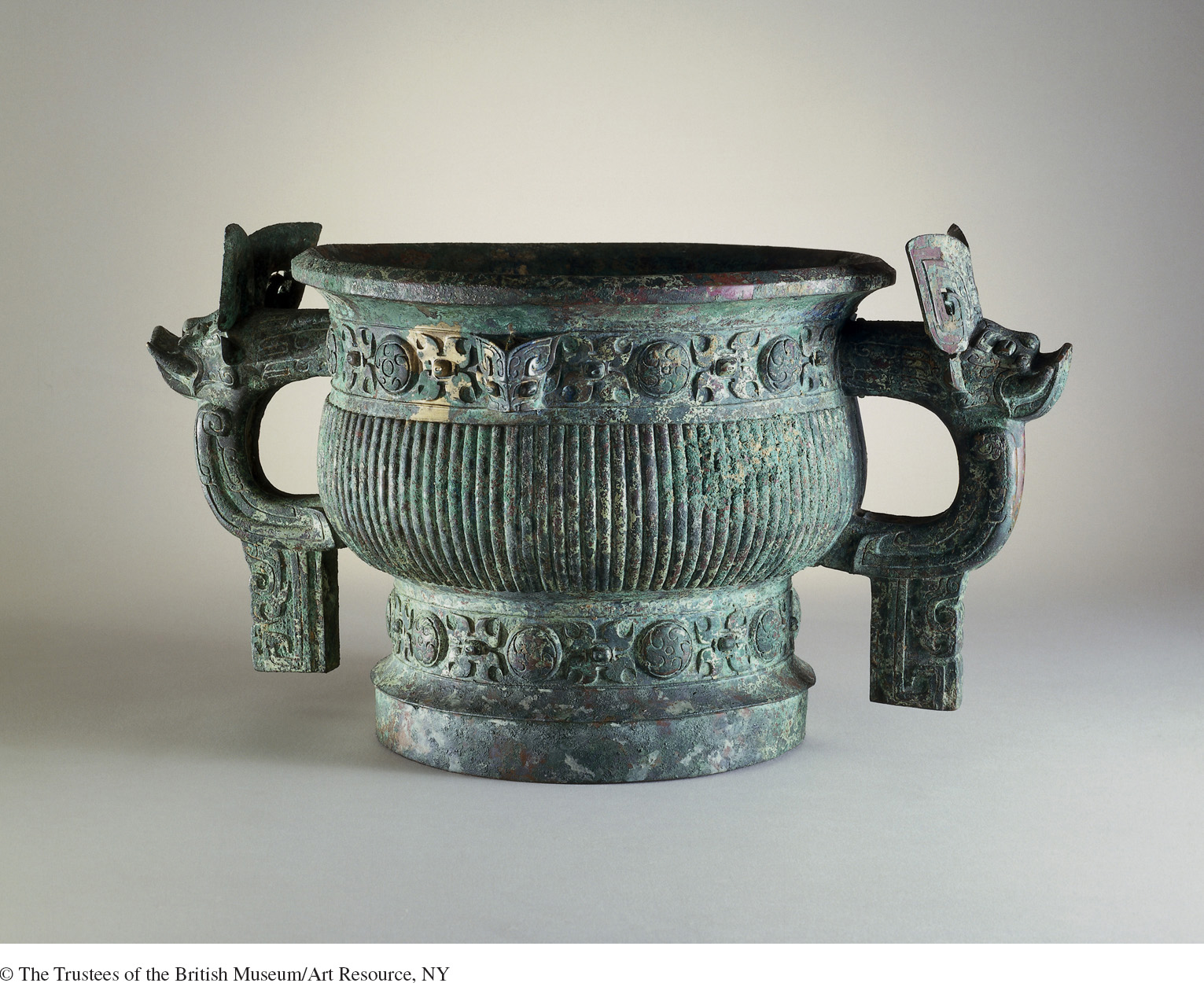Source 2.6
Socializing with Ancestors
Social life in ancient China, and in many other places as well, was not limited to the living. Rulers and peasants alike understood themselves to be as closely related to their departed ancestors as to their contemporaries. One later Chinese ruler constructed a huge underground city in which he would continue to rule after death, in association with soldiers, officials, and entertainers, amid the many objects with which he was familiar in life (see Chapter 3). People in far more modest circumstances frequently offered food and drink, sometimes whole banquets, to nourish their ancestors, hoping for their support and assistance in the vagaries of life.
This exquisite bronze bowl, a ritual vessel for making such offerings to ancestors and dating to about 1050 B.C.E., was commissioned by Mei Situ Yi, an apparently prosperous military official who had been involved in the overthrow of the Shang dynasty by the forces of the new Zhou dynasty. An inscription in the bottom of the bowl tells us that it was “in honor of his late father,” also a warrior. Such vessels usually came in sets, with each one having a very particular role in the banquets that allowed the living to keep in touch with the dead. Among the elite, however, they were also sometimes buried with the deceased to allow him to organize such banquets in the afterlife for his own ancestors.2
Questions to consider as you examine the source:
- The casting of such bowls was a very time-
consuming and expensive process. What does this suggest about the status of those who could afford such an item? - What physical features of the bowl do you find most striking? Notice especially the handles, each of which depicts a large beast swallowing a bird. Might you care to speculate about the meaning of such an image?
- How might such items be useful to historians seeking to reconstruct the history of ancient China?
Socializing with Ancestors: Bronze Gui

Notes
- “Chinese Zhou Ritual Vessel,” A History of the World in 100 Objects, No. 23, BBC, http://www.bbc.co.uk/ahistoryoftheworld/objects/9ncaOZABRHO5tcKeacBlJQ.